Palacio Arzobispal de Manila | Calle Arzobispado, Intramuros, Manila Philippines [Historical Sites]
The Roman Catholic Diocese of Manila was formally established on 6 February 1579. It was carved out of the Archdiocese of Mexico City and is considered as the Primate of the Philippines. Following the tradition of nobility, the Archbishop holds the title of a Señor (Lord), thus his residence is called a palace. The very first residence of the Archbishop of Manila is within the complex of Manila cathedral where the first seven archbishops resided.
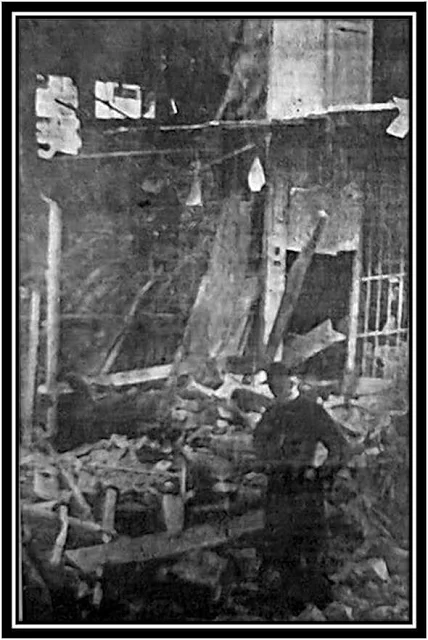 |
| Archbishop Michael O’Doherty amidst the ruins of the Archbishop’s Palace Photo credits to Dr. Vic Torres |
After the earthquake of 1645 which left the whole of Manila in ruins, and following the death of Archbishop Fernando Montero Espinosa in 1648, came Archbishop Miguel de Poblete. Although assigned in 1649, he only arrived in Manila much later on 24 July 1653. What he first saw was the deplorable ruins of the cathedral and the archbishop’s palace. Finding himself without a home upon his arrival, he purchased one block of property bound by Calle Postigo, Calle Santa Lucia, Calle Beaterio and Calle Arzobispado which became the Palacio Arzobispal.
 |
| Doorway leading to the courtyard of the Archbishop’s Palace Photo credits to Dr. Vic Torres |
Observing the detail of the Murillo Map of 1734, the Archbishop’s Palace occupied the entire block.
 |
| Detail of the 1734 Murillo Map |
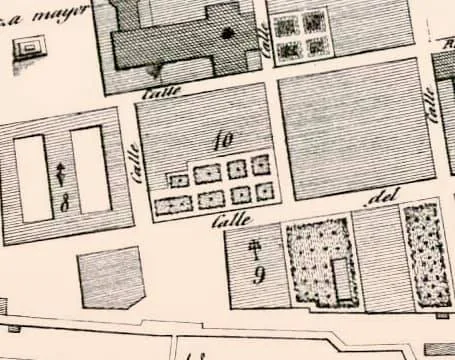 |
| Detail of the 1851 map |
By the time the Manila map of 1851 was published, the palace was occupying only half of the block, with the other half along Calle Postigo had become an open space. The adjacent block bound by Callle Beaterio and Calle Anda was also transformed into a garden for the Archbishop’s palace.
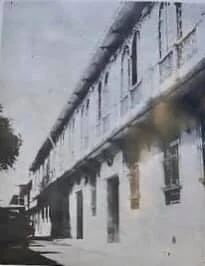 |
| The facade of the Archbishop’s Palace along Calle Arzobispado |
Upon the return of the Jesuits in 1859, the Archbishop donated the garden of the Palace for them to build the San Ignacio Church. To the left of San Ignacio was the Jesuit mission house and to its right was the Xavier Hall which housed the the diocesan seminary. When the seminary was moved at the back of the cathedral, Xavier Hall became part of the the palace complex thus closing off the portion of Calle Beaterio.
 |
| The throne room of the Archbishop’s Palace Photo credits to Mr. Dennis Raymond Maturan |
 |
| The Archbishop’s Palace Chapel in Intramuros, from a photo from the Quezon Family Collection. Here we see O’Doherty with Mrs Quezon. |
Photographs of the Archbishop’s palace, especially its interiors are quite elusive, save for one showing the magnificent throne room of the Archbishop. The palace which housed 20 archbishops from Miguel de Poblete to Michael O’Doherty was bombed in 1944. The residence of the Archbishop was temporarily moved, first to Tayuman, then to the convent of San Miguel church in the Malacañang neighborhood until Archbishop Michael O’Doherty purchased Villa Grimault along Shaw Boulevard. It was renamed Villa San Miguel and became the official residence of the Archbishop.
 |
| Aerial shot of the Archbishop’s Palace Photo credits to Mr. John Tewell |
 |
| The rear portion of the Archbishop’s Palace Photo credits to Mr. John Tewell |
The former Arzobispado and Xavier Hall in Intramuros was utilized for the office of the Curia and the Chancery when it was reconstructed in the 1980’s.
 |
| Pediment of the Archbishop’s palace facing Calle Arzobispal Photo credits to The Traveler on Foot |
 |
| The present Palacio Arzobispal structure Photo credits to Mr. Jun Sanchez |
 |
| The reconstructed Xavier Hall Photo credits to Mr. Jim Sanchez |
The residence of the Archbishop returned back to Intramuros in 2004 when Cardinal Rosales opted to let Cardinal Sin use Villa San Miguel as his retirement home.
________________
References:
1. The marker of Palacio Arzobispal
2. Website of the Manila Cathedral
3. Ciudad Murada by Dr. Jose Victor Torres
(C) Lorenzo Bukas
FACTUAL CORRECTIONS by Aaron Ricardo Veloso
Just some factual corrections in the post-war history of the Arzobispado:
1. After the destruction of the Arzobispado, Mons. O’Doherty moved to the UST Fathers’ Residence where he stayed until after the liberation. When matters stabilized a little, both the Archbishop and the seat of the Diocese was temporarily moved to the Immaculate Conception Parish in Tayuman. (On a side note, the parochial school there is still called Manila Cathedral School).
2. A decree by Archbishop O’Doherty designated San Miguel as Pro-Cathedral only in 1948. The Archbishop’s residence was also moved to the rectory of San Miguel. The ground floor of the building served as the Chancery of the Archdiocese; the second floor, the residence. The Chancery remained in San Miguel until the 1980s when the new Arzobispado was completed. The seat of the Archdiocese was returned to the Manila Cathedral after the reconstruction.
3. It was Archbishop O’Doherty who bought Villa Grimault, that is why it was named Villa San Miguel, after his namesaint, Saint Michael. The silver altarpiece in the old Arzobispado chapel (I will post picture later) was disassembled and kept in storage during the war; it was re assembled in Villa San Miguel. Archbishop Gabriel Reyes was the first Archbishop to live in Villa San Miguel, while Cardinal Sin was the last.
_______________
In Video:
The silver altar captured in a video during a wedding.
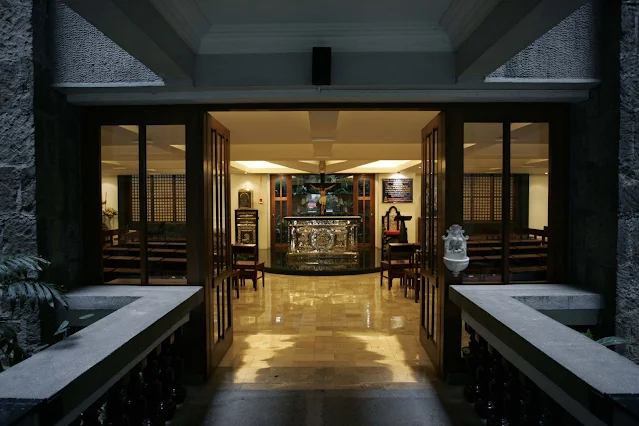 |
| Archbishop's Chapel, Arzobispado, Intramuros, Manila |

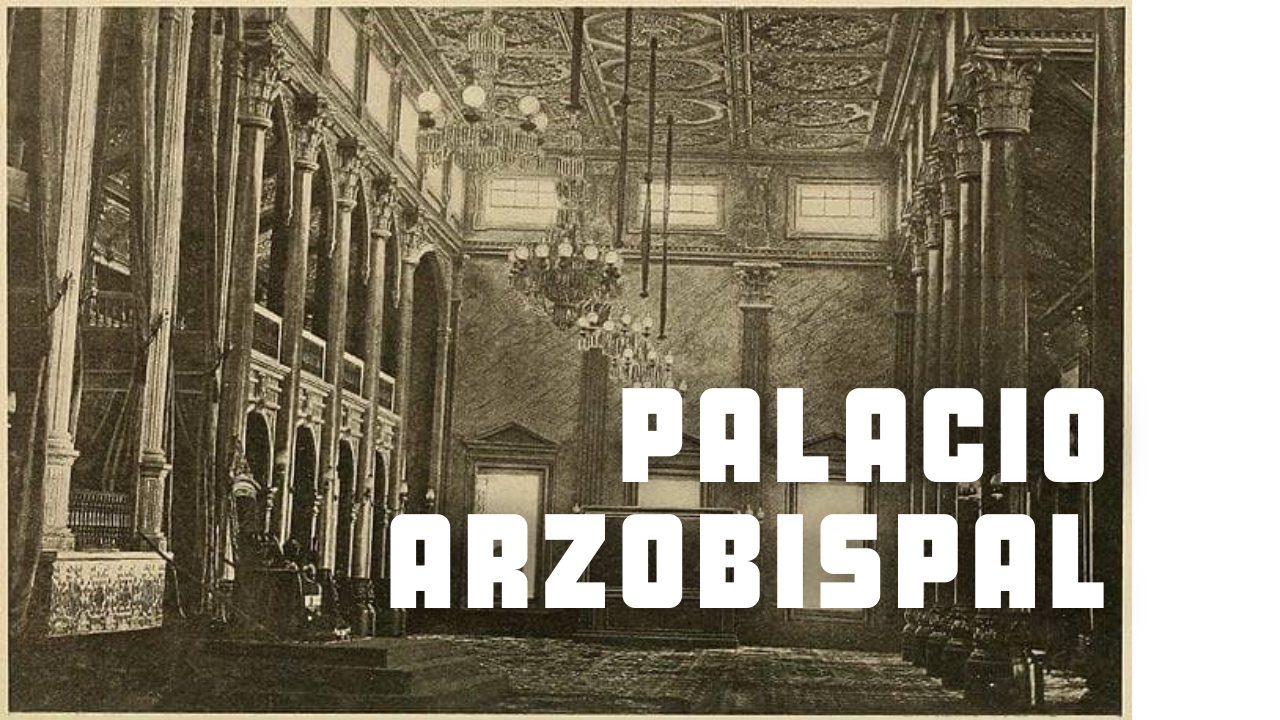

No comments:
Got Something to Say? Thoughts? Additional Information?